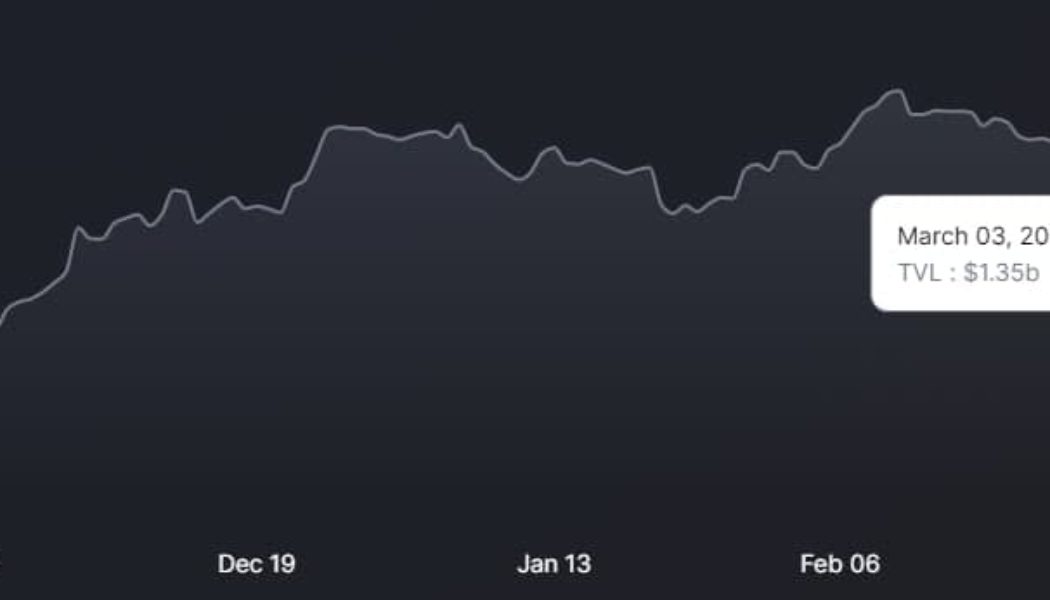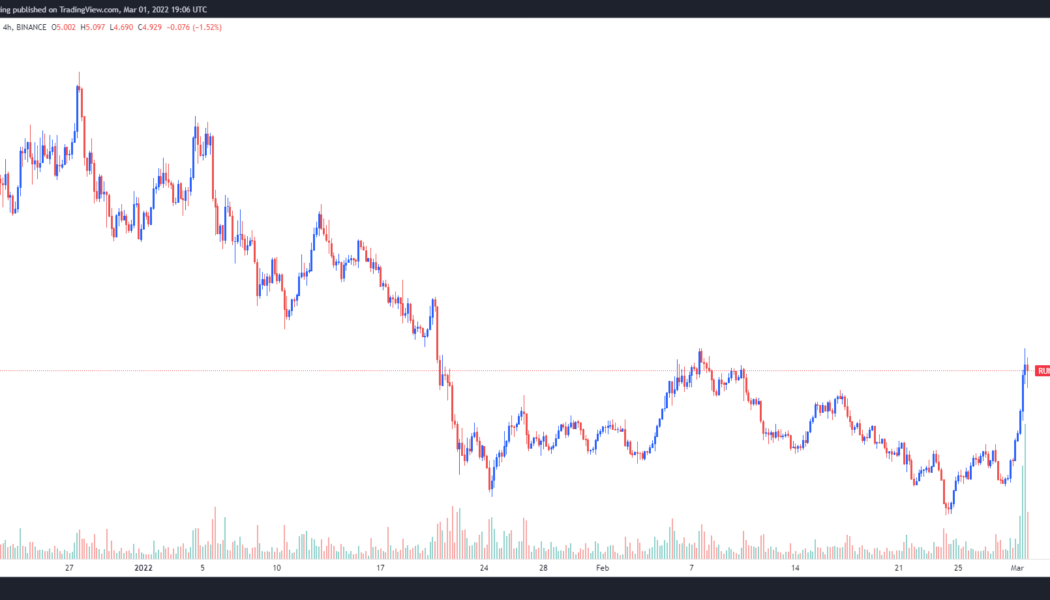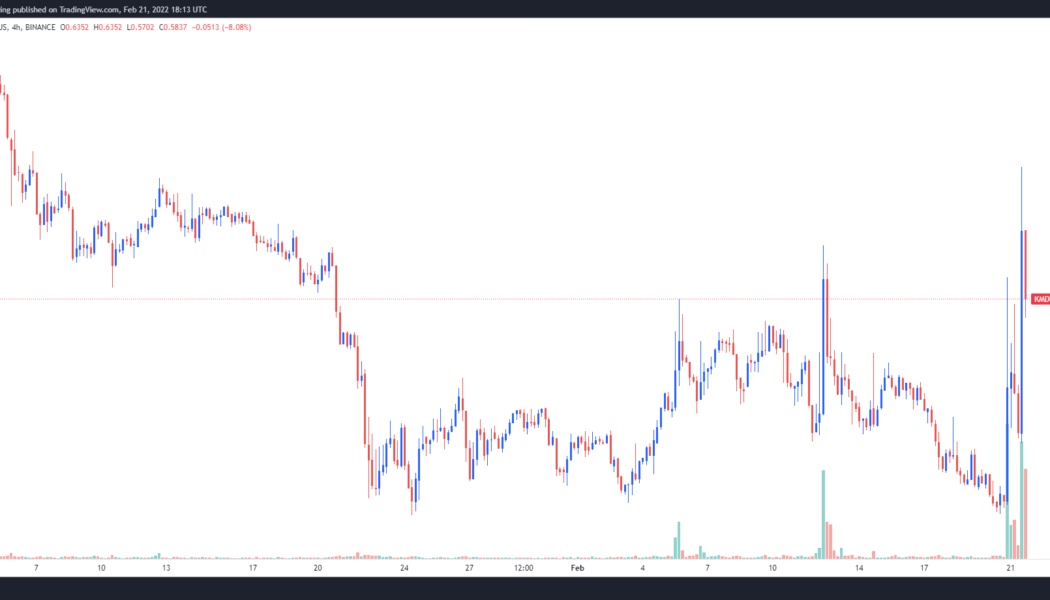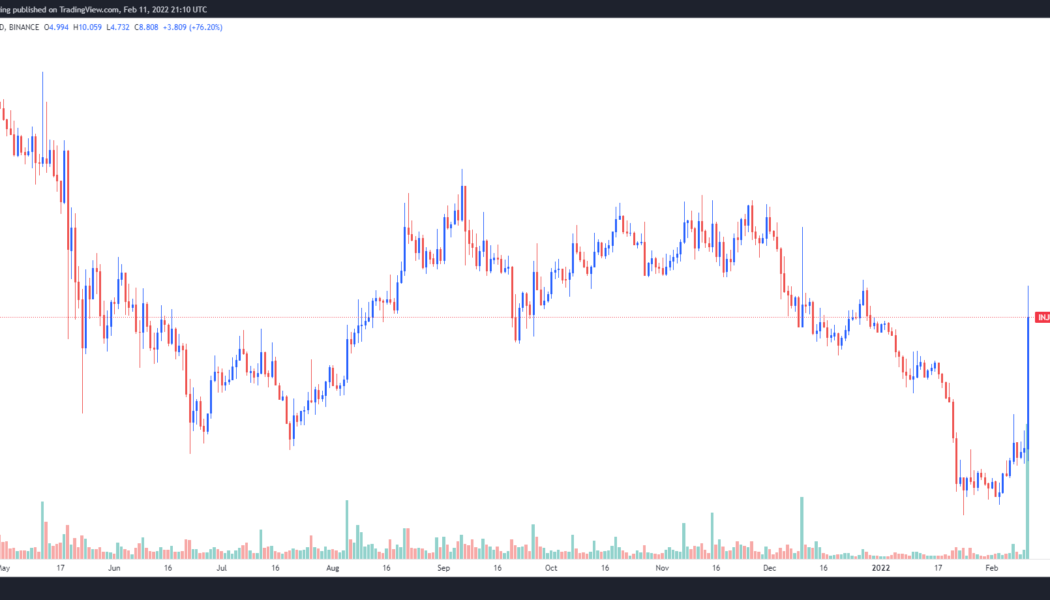Decentralized Exchange
Altcoin Roundup: Three layer-1 protocols see inflows amid choppy, volatile market conditions
Layer-1 (L1) protocols are the foundation of the decentralized application ecosystem, with the Ethereum network dominating the landscape in terms of the number of protocols launched on-chain and total value locked (TVL), followed by BNB Chain and Fantom. As the sideways market of 2022 drags on and serious projects use the time away from the frenzy of bull markets to work on development, several L1 protocols have been outperforming the field and making gains despite weakness in the wider crypto market. Here’s a look at three L1 protocols that are seeing growth in their decentralized finance (DeFi) communities and an influx of TVL on their networks. Waves Waves is a multi-purpose blockchain protocol that was originally launched in 2016 and has since undergone several transformations al...
Altcoin Roundup: DeFi token prices are down, but utility is on the rise
The decentralized finance (DeFi) sector has been sitting in the backseat since whipping up a frenzy in the summer of 2020 through the first quarter of 2021. Currently, investors are debating whether the crypto sector is in a bull or bear market, meaning, it’s a good time to check in on the state of DeFi and identify which protocols might be setting new trends. Here’s a look at the top-ranking DeFi protocols and a review of the strategies used by users of these protocols. Stablecoins are the foundation of DeFi Stablecoin-related DeFi protocols are the cornerstone of the DeFi ecosystem and Curve is till the go-to protocol when it comes to staking stalbecoins. Top 5 protocols by total value locked. Source: Defi Llama Data from Defi Llama shows four out of the top five protocols in terms of to...
Finance Redefined: DeFi ‘Godfather’ Cronje quits, CAKE launches $100M venture arm and more
The decentralized finance (DeFi) ecosystem had quite an eventful week with several new developments and price action. The week started with DeFi “Godfather” Andre Cronje announcing his departure from most of his projects, leading to a massive drop in prices of projects that Cronje was associated with. CAKE DeFi launched a new $100 million venture fund to support Web3 initiatives, ThorChain spiked over 34% after activating synthetic assets and Polygon network suffered an extended outage post new upgrade that impacted its price momentum. DeFi “Godfather” Cronje quits as TVL and tokens tank for related projects DeFi architect, Fantom Foundation technical adviser and Yearn.finance founder Andre Cronje has left the decentralized finance space reeling after deactivating his Twitter account. Cron...
Celo foundation proposes to deploy Uniswap V3 on its native blockchain
A new community proposal was introduced in the Uniswap governance forum to deploy the protocol on the Celo blockchain, which is a mobile-first, carbon-negative and Ethereum Virtual Machine-compatible network. The new proposal was created on behalf of Blockchain at Michigan, and in partnership with the Celo Foundation and the Celo Climate Collective. Once passed, Uniswap will be accessible to nearly six billion mobile phone users. Currently, MetaMask mobile app enables using Uniswap or other decentralized exchanges via an in-app browser. The Celo foundation will commit $10 million of CELO in Uniswap-specific user incentives and grants along with $10 million in financial incentives for Uniswap specifically, The main focus of deployment would be the introduction of green asset liquidity pools...
Terra, Avalanche and Osmosis lead the L1 recovery while Bitcoin searches for support
The layer-one (L1) ecosystem has received increased attention in recent months as users search for new investment opportunities in the Cosmos (ATOM), Fantom (FTM) and NEAR. Following January’s market sell-off, where Bitcoin (BTC) price dropped to bottom below $34,000, much of the L1 field has struggled to regain its momentum. Price performance of L1 tokens since Jan. 24. Source: Delphi Digital According to data from Delphi Digital, since the BTC bottom on Jan. 24, the only L1 to experience a notable gain in price include Terra (LUNA), Avalanche (AVAX) and Ethereum (ETH). Terra ecosystem growth The price growth seen in LUNA was in large part due to the announcement from the Luna Foundation Guard that it had raised $1 billion to form a Bitcoin reserve for the ecosystem’s Terra US...
Altcoin Roundup: JunoSwap, Solidly and VVS Finance give DeFi a much-needed refresh
Decentralized finance (DeFi) was the talk of the town in early 2021, but it has since taken a back seat to more appealing sectors like nonfungible tokens (NFTs), memecoins and blockchain gaming. Now that cross-chain bridges and interoperability have allowed for the easier migration of assets to competing chains, a new class of DeFi protocols is arising to challenge those left from 2021. Here’s a look at three DeFi projects that have launched on some of the up-and-coming layer-1 blockchain networks, catching the eye of the crypto community. VVS Finance VVS Finance is the largest DeFi protocol on the Cronos network, a project that emerged out of the Crypto.com ecosystem which has since been fully rebranded to Cronos (CRO). The goal of VVS Finance is to offer instant swaps with low fees...
REN price gains 65% after Catalog launch brings a cross-chain DEX to its blockchain
Decentralized finance projects like Ren pumped in 2021, only to finish the year right back where they started as high fees on Ethereum (ETH) led to decreased activity for many protocols and DeFi took a backseat to more popular sectors like nonfungible tokens (NFTs). Now, it appears as though that downtrend is in the process of reversing course after recent global events highlighted the benefits of DeFi and holding assets outside the traditional financial system. This week REN price climbed 69% from a low of $0.247 on Feb. 24 to a daily high of $0.418 on March 3. REN/USDT 4-hour chart. Source: TradingView Three reasons for the potential price reversal in REN are the launch of its first layer-one application Catalog, the launch of VarenX on Polygon and several new partnerships and inte...
Finance Redefined: Uniswap builds token-swap feature for Ukraine, LUNA surpasses Ether, and more
The crypto community has emerged as one of the leading aid providers for Ukrainians, as crypto donations surged over $50 million. This week, many in the decentralized finance, or DeFi, community have come forward to donate and make it simpler for other people to donate to Ukraine. LUNA continued its price dominance with another double-digit surge over the past week and also flipped Ether to become the most staked altcoin. 1Inch launched a new secure peer-to-peer, or P2P, swap that the firm claimed could open the gates to several new use cases. Uniswap builds an interface to swap altcoins into ETH donations for Ukraine On Tuesday, decentralized exchange, or DEX, Uniswap launched an interface which directly converts ERC-20 tokens into Ether (ETH) and sends them to the official crypto w...
Rune’s upcoming mainnet launch and Terra (LUNA) integration set off a 74% rally
2021 was a roller coaster of a year for THORChain (RUNE), which saw its price top out at $20.31 only to come crashing down below $4 as a series of hacks and declining interest in decentralized finance had the token limping into 2022. Data suggests that investors could be taking a closer look at Rune and a few potentially bullish factors could include the protocol’s recent integration with the Terra and Cosmos ecosystem, an upcoming mainnet launch and the attractive yields offered to liquidity providers. RUNE/USDT 4-hour chart. Source: TradingView Data from Cointelegraph Markets Pro and TradingView shows that after hitting a low of $3.00 on Feb. 24, the price of RUNE has rallied 74.2% to a daily high at $5.23 on March 1 amid a 388% surge in its 24-hour trading volume. Rune integrates ...
Altcoin Roundup: 3 portfolio trackers NFT and DeFi investors can use to stay organized
The cryptocurrency ecosystem has seen a tremendous amount of growth over the past couple of years, as the introduction of decentralized finance (DeFi) and the popularity of nonfungible tokens (NFT) have led to an explosion of projects on more than a dozen blockchain networks. The rapidly growing ecosystem means investors have to keep track of multiple wallet addresses, making portfolio trackers a popular option for traders needing to manage a diverse multichain portfolio. Here are three portfolio-tracking decentralized applications, or DApps, crypto traders can use to help monitor their investments. Zapper Zapper supports the basic management of cryptocurrencies held on 11 different networks including Ethereum, Polygon, BNB Chain, Fantom, Avalanche and Optimism. The basic layout of t...
Komodo (KMD) rallies 54% after major push to expand interoperability with AtomicDEX
Interoperability between separate blockchain networks has become a major theme in the cryptocurrency market over the past year, but several major exploits — such as the $321 million Wormhole exploit — have highlighted the difficulties in achieving cross-chain transfers in a secure manner. One protocol that has been gaining traction in February thanks to its alternative approach to achieving cross-chain interoperability is Komodo, an open, composable multichain platform that is home to the AtomicDEX wallet and non-custodial decentralized exchange. Data from Cointelegraph Markets Pro and TradingView shows that after hitting a low of $0.446 on Feb. 20, the price of the platform’s KMD token surged 54% to a daily high of $0.687 on Feb. 22. KMD/USDT 4-hour chart. Source: TradingView Three r...
Injective Protocol (INJ) rallies 100%+ after launching cross-chain support for Cosmos
Trading perpetual futures contracts in decentralized apps is a crypto sub-sector ripe for growth, especially as discussions of regulation, taxation and mandatory KYC at centralized exchanges continue to take place. One DEX platform that has begun to gain traction is Injective (INJ), an interoperable layer-one protocol designed to facilitate the creation of cross-chain Web3 decentralized finance (DeFi) applications. Data from Cointelegraph Markets Pro and TradingView shows that after hitting a low of $3.91 on Feb. 3, the price of INJ has rallied 157.8% to a daily high of $10.08 on Feb. 11 amidst a 1,756% spike in its 24-hour trading volume to $306 million. INJ/USDT 1-day chart. Source: TradingView Three reasons for the spike in demand for INJ include the addition of support for new assets i...





















